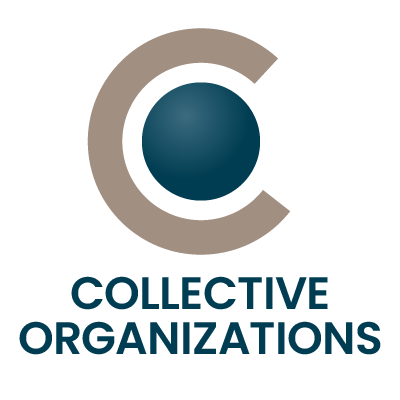A transition from the Hero’s Journey to a Collective Journey in movies and popular narratives is empowering workers to develop new mindsets that require a new type of leader.
The concept for Collective Organizations is based on the “Collective Journey” narrative studies by Jeff Gomez. Jeff developed this theory as entertainment companies look for a new way to engage audiences empowered by digital resources. These newly informed audiences are also our employees.
Consider how the Hero’s Journey model informs the way we currently organize and lead employees:

Leadership is reactive and driven by a conflict. Leaders react to problems by managing employee behaviors and controlling those who challenge the system. Leaders work to maintain the status quo.

There is an expectation of linear success. Success is defined by the leader and dominant culture. Failure is considered unacceptable. Mistakes are feared and stigmatized.

Leaders address singular problems. Problems are addressed one-at-a-time as they arise often by separate departments. The end product is prioritized over the process and employee experience.

Leaders see issues as “Black or White,” good or bad, positive or negative, usually from their singular viewpoint.

Knowledge is limited and employees are expected to defer to leaders. Leaders control or direct workers, keeping their own power by limiting knowledge. They give an impression that not-knowing shows a lack of strength or preparation.

Leaders are celebrated as individuals. A leader is rewarded with disproportionate power, status, material wealth, and membership in the “elite.” They are considered separate from their community.

The community and leader are burdened. The organization relies on leaders. Without a leader they cannot operate, and will suffer.
The Collective Journey suggests a way to reframe leadership and authentically engage workers:

Leadership is proactive and driven by an ongoing commitment to the organization and employees' well-being. Leaders continually seek feedback and adapt, working toward what's best for the community.

Success is non-linear. The organization encourages values based, multi-perspectived, and multi-dimensional views of success. Failure is supported as essential to to growth and the creative process.

Leaders see problems as systemic. Leaders do not work to reinforce the status quo. Instead, they're constantly observing and addressing what is not serving the organization and its members.

Leaders see the world from multiple perspectives, understanding that any situation can be assessed and critiqued from multiple viewpoints.

Leaders share knowledge knowing that greater strength comes from collaboration. Employees are well-informed members of synergetic, equitable teams. Leaders feel comfortable "not knowing" and see strength in continual learning.

Teams are celebrated. Leaders are among a collective working together to create positive change. Their reward is a sense of satisfaction and membership in their community.

People Depend on Each Other Leaders are one of many who make a significant contribution to a common cause. If one leader falters, the community is empowered so it survives!

